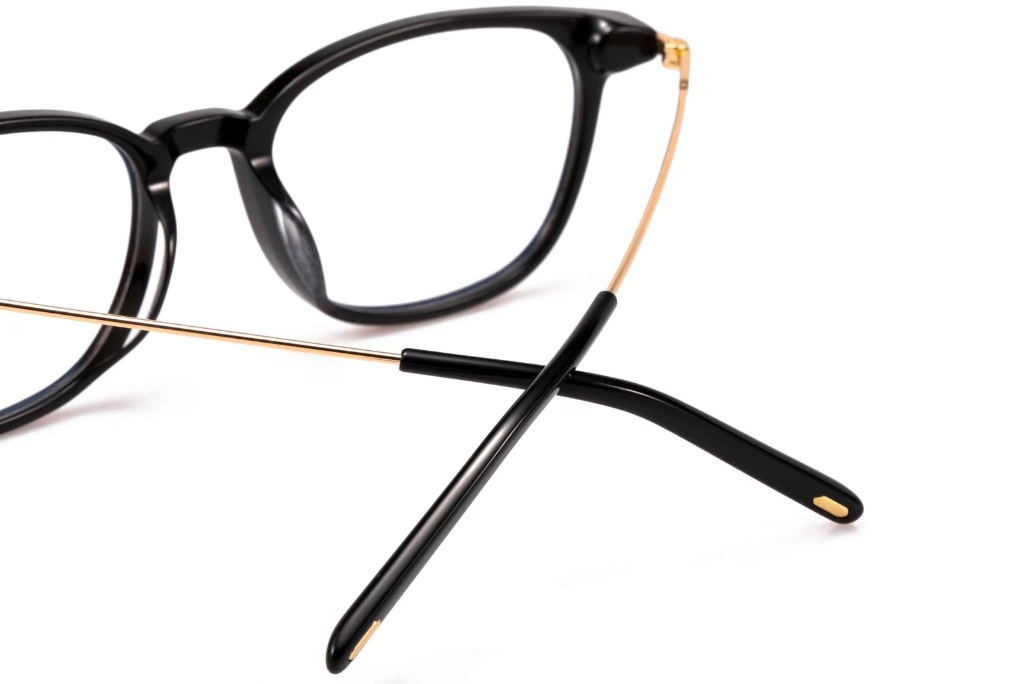

I’ve been wearing acetate glasses for years, and honestly, they’re my favorite. They just feel different—sturdier, more comfortable, and way more stylish than cheap plastic frames. But after working in the eyewear industry, I’ve learned that there’s more to acetate than just good looks. Some of the stuff they don’t tell you at the optician’s office? Yeah, that’s what we’re diving into today.
What Even Is Acetate? (And Why Should You Care?)
So, acetate isn’t your average plastic. It’s made from natural stuff—wood pulp and cotton—which already makes it way cooler than those petroleum-based frames that feel like they’ll snap if you look at them wrong. The process is pretty wild: they take plant fibers, mix them with acetic acid (yep, like vinegar), and turn them into these little flakes. Then, after adding some other ingredients to make it flexible, they melt it down and mold it into glasses.
The best part? Since it’s plant-based, it’s way more eco-friendly. Plus, it doesn’t give me that weird skin irritation some cheap plastics do.
Acetate vs. Plastic: Why Acetate Wins (Most of the Time)
Let’s be real—most plastic frames feel like they came out of a cereal box. Acetate? Totally different league.
They Bend, Don’t Break – Ever sat on your glasses and prayed they’d survive? Acetate frames have a little flex to them, so they’re less likely to snap.
Colors That Actually Last – Regular plastic frames get that gross, faded look after a while. Acetate is dyed all the way through, so even if you scratch them, the color stays.
No Weird Skin Reactions – Some plastics make my ears break out. Acetate? Never had that problem.
Eco Bonus Points – Since it’s made from plants, it’s less gross for the planet.
But (and there’s always a but)…
The Sneaky Problem No One Warns You About
Okay, here’s the thing: acetate frames themselves are tough, but the lenses? Sometimes they’re weirdly fragile.
A while back, a friend in the industry told me about a shipment of acetate glasses that passed every quality check—then showed up with shattered lenses. No drops, no rough handling, just… broken.
Turns out, the issue might be in how the acetate is cured.
Why Waiting Matters (And Why Some Companies Skip It)
For acetate to be stable, it has to sit around for months—sometimes over a year—before it’s turned into glasses. This lets any leftover chemicals evaporate so they don’t mess with the material (or your skin).
But with acetate glasses getting so popular, some manufacturers are rushing the process. And guess what? There’s no easy way to tell if your frames were properly cured unless the brand is super transparent.
So… Are Acetate Frames Still Worth It?
Absolutely. I’ll keep buying them because they’re durable, comfortable, and fashion. But now I know to buy from brands that actually care about quality—not just fast fashion for your face.
Final Tip: If your acetate glasses feel weirdly brittle or smell like chemicals? Might be a sign they weren’t cured right. Stick with trusted eyewear manufacturer, and you’ll be good. Comarc eyewear manufacturer is one of them.
(And hey, if you want to know more acetate frames, keep following up.)

#Shenzhen eyewear factory # eyewear factory in china #high quality eyewear factory #acetae eyewear #metal eyewear #titanium eyewear high-end quality eyewear factory